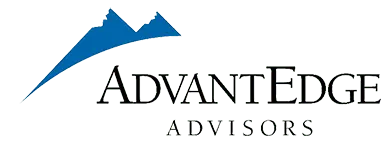Insights
Increasing Business Value Before a Sale
Every business owner sees their business as inherently valuable. But those who truly want to increase value view the business through the lens of a potential buyer. The stronger the business is, the more likely it is to fetch a high price. So how can a seller fortify a business to be the strongest contender in the eyes of a buyer?
Benchmarking
Financial benchmarks compare companies to similarly sized competitors. Databases like Sageworks track thousands of businesses to offer clear benchmarking. Businesses that operate beneath industry averages may have significant liabilities. Benchmarking helps identify these companies, and may offer insight into the source of the problem.
Financial buyers typically look at dozens of businesses a week, using criteria such as deal size, profit, and industry space. Those that don’t meet these initial criteria are immediately discarded. Those that do have already cleared the first hurdle.
Increasing Intrinsic Value
Business growth, risk, margin, cash management, and size create the business’s intrinsic value. This value directly affects the company’s attractiveness to investors. The elements of intrinsic value include:
- Business history, including business processes such as growth, margin, size, and cash management.
- Business projections, including risk and weighted average cost of capital (WACC), which incorporate factors such as planning, legal, leadership, marketing, cost of equity, cost of debt, operations, people, and more.
Growing businesses often add more support or sales people. Businesses that wish to increase profit may want to reduce expenses. Shorter receivables cycles can strengthen cash flow. The key is to assess how to achieve the improvements you desire. It’s vital to analyze business processes to improve financial and operating performance. And if necessary, you may need to re-engineer key processes.
Analysis of Business Processes
By charting information flow, from prospect identification through order and into cash, businesses may uncover a range of shortcomings in quality, processing time, or overall efficiency.
Business Process Analysis
Charting the flow of information from prospect identification to order and from order to cash can reveal shortcomings in efficiencies, quality, and processing time. Average improvements are often significant, and can make a business more profitable and more attractive.
Risk and Liability Management
Valuation is an art and a science. Buyers make projections with the assistance of historical financials. Debt is almost always less expensive than equity, but some multiple of EBITDA limits debt. Available debt leverage and equity costs create the weighted average cost of capital (WACC). WACC becomes a discount rate that is applied to financial projections to determine the company’s future cash flow stream’s net present value. This approach produces a prospective re-capitalization, and serves as the basis for an offer. That’s where the science ends.
The art begins with the assumptions that drive net present value calculations, and which link future risk to equity costs. Software developer models analyze components such as planning, sales, marketing, leadership, finance, legal, and operations, as well as the role these processes play in risk of future growth.
These models compare current risk to a benchmark that is ready for an initial public offering. Gaps between the reality and the ideal provide insights into ways to reduce risk and improve value.
Strategic Premium
The value a strategic buyer determines is the unique product of the buyer’s existing company and the potential acquisition. The value, however, of the acquisition target as outlined in the formula above offers a useful base value. From there, valuation includes the synergies between the two entities—lower costs, increased sales, etc.
Synergy value may take years to develop, and can be disruptive if poorly planned or executed. Synergies are usually difficult to extract. They demand the merging of people, processes, and culture. Synergy value can be a powerful incentive and contribute to a higher price. But a seller lacks control over synergy value, and sellers rarely get full credit for this value in the final purchase price.
M&A Advisors and investment bankers utilize specific processes to identify potential buyers and offer them key information for evaluation. These advisors market the business and help the sale process move forward. They also negotiate terms.
Timing
Identifying value enhancement opportunities is often a quick process that takes less than 90 days. But it can take much longer—up to two years—to achieve value enhancement goals. This is why identifying these goals well ahead of a sale is so important.
It’s true that a business is only worth what a buyer is willing to pay.
It’s equally true that businesses must identify and optimize their value in anticipation of a sale. This sale preparation demands skill. Knowing where to seek help and how to achieve the biggest payback are vital.
The return on this investment is often significant. Business process re-engineering, risk reduction, and benchmarking make a company stronger and more valuable to existing owners, while increasing the company’s attractiveness to potential future buyers.




